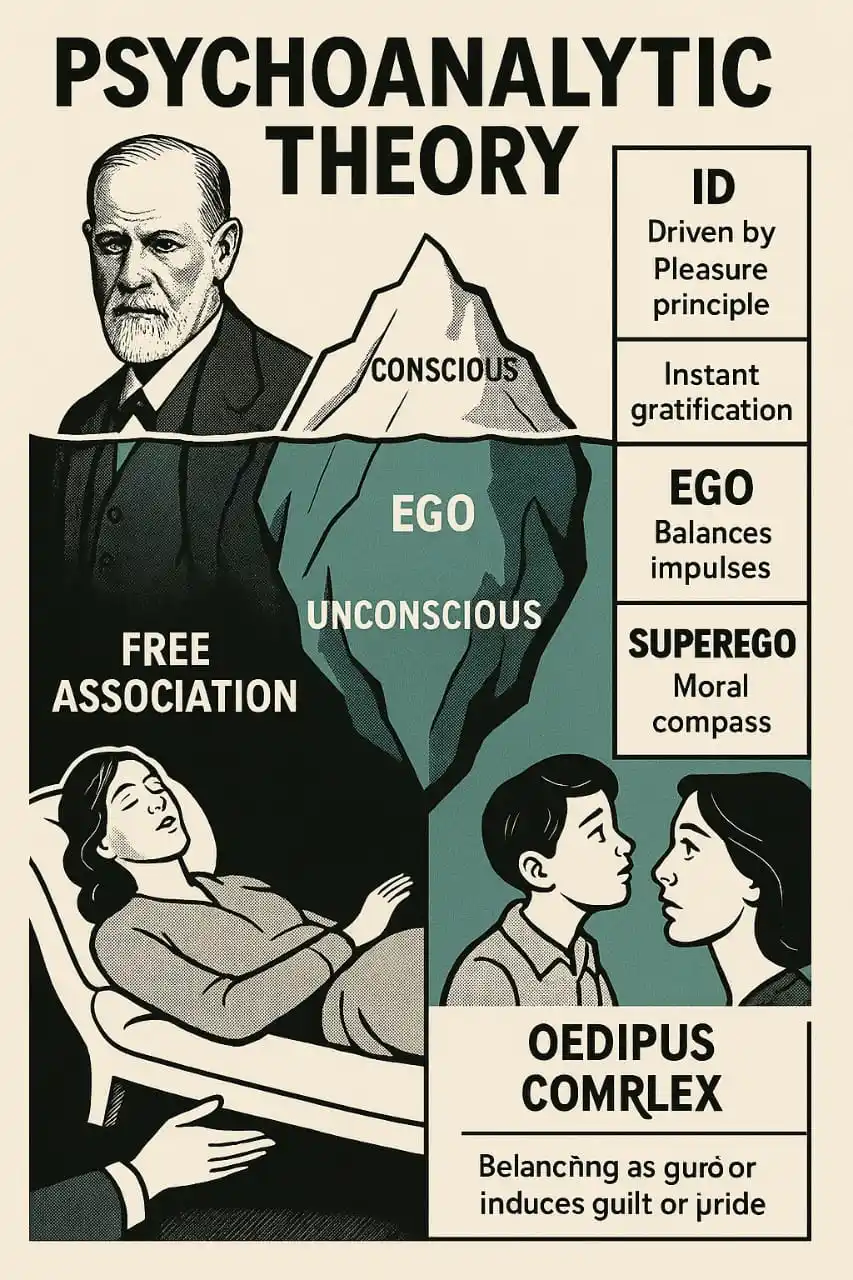
Psy.cheso
June 10, 2025 at 07:44 PM
*Psychoanalytic theory*
【1】 Sigmund Freud introduced Psychoanalytic Theory in 1900 through his groundbreaking book The Interpretation of Dreams.
【2】 Freud compared the human mind to an iceberg, with only the conscious mind visible and the unconscious submerged below.
【3】 The psyche is divided into three parts — Id, Ego, and Superego, constantly negotiating human behavior.
【4】 The Id, driven by the pleasure principle, seeks instant gratification of instinctual desires like libido (Eros) and aggression (Thanatos).
【5】 The Ego acts as a reality-check, balancing Id’s impulses and Superego’s moral rules through the reality principle.
【6】 The Superego internalizes societal and parental norms, acting as a moral compass that induces guilt or pride.
【7】 Freud developed free association as a method for uncovering unconscious material by letting patients speak freely.
【8】 The famous case of Anna O., treated with Josef Breuer, became the model for Freud’s theory of catharsis and talking cure.
【9】 Freud saw dreams as symbolic wish-fulfillments, differentiating manifest content (surface story) from latent content (hidden meaning).
【10】 The Oedipus Complex, based on Sophocles’ tragedy, describes unconscious sexual desire for the opposite-sex parent.
【11】 Freud laid the foundation for clinical psychology, influencing therapy, trauma studies, and modern psychiatry.
【12】 He introduced defense mechanisms such as repression, projection, denial, and sublimation to protect the psyche from anxiety.
【13】 Freudian slips are accidental verbal or behavioral mistakes that reveal unconscious thoughts (e.g., calling teacher "mom").
【14】 Carl Jung, Freud’s associate, proposed the collective unconscious containing universal symbols called archetypes.
【15】 Jung's archetypes — like the Hero, Shadow, and Mother — are seen in epics such as the Ramayana and Mahabharata.
【16】 Alfred Adler diverged from Freud, emphasizing inferiority complex and the role of social factors in personality.
【17】 Erik Erikson built on Freud’s model, proposing 8 psychosocial stages from infancy to old age.
【18】 Shakespeare’s Hamlet reflects Freud’s theories, especially repression and the Oedipal struggle.
【19】 Alfred Hitchcock’s film Psycho (1960) illustrates Freudian concepts of split personality, repression, and maternal fixation.
【20】 Though criticized for being unscientific, Freud’s theory has profoundly influenced literary criticism, art, gender studies, and political psychology.

❤️
2